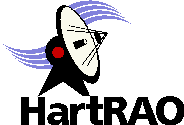
HartRAO Home >
news >
NASSP Student Practical 2003/08/28
NASSP Student Practical 2003/08/28
The National Astrophysics and Space Science Programme (NASSP) began in 2003. It is being hosted
by the University of Cape Town. From August 25 to 29 the Honours students
in the programme visited HartRAO for their Radio Astronomy practical. They
were joined by two Hons. students from the Department of Physics and
Electronics at Rhodes University.
The students were soon introduced to the the radio telescope:
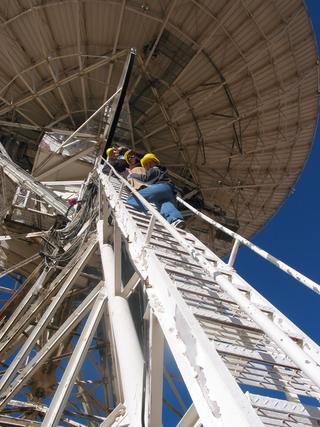
Click on image for large version
Here the first group of students begins the long climb up the telescope.
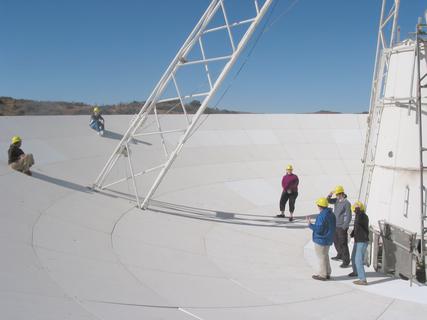
Click on image for large version
The students get accustomed to the size of the radio telescope, twenty six
metres in diameter.
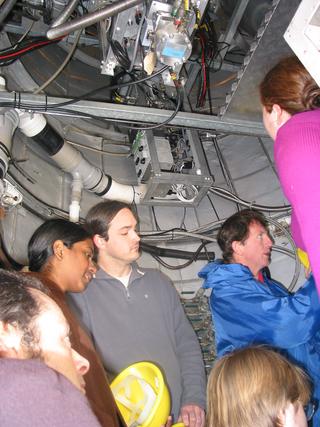
Click on image for large version
In the centre of the telescope is the 'Cassegrain Cone", which houses all
but one of the microwave feeds and receivers. The receivers (again
excepting one) are all cooled to 16 degrees above absolute Zero, to improve
their sensitivity. Here the students get a close look at the hardware
needed for modern radio astronomy.
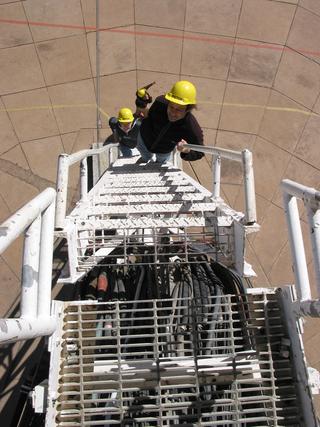
Click on image for large version
Its a long way down. The first group of students leave the telescope.
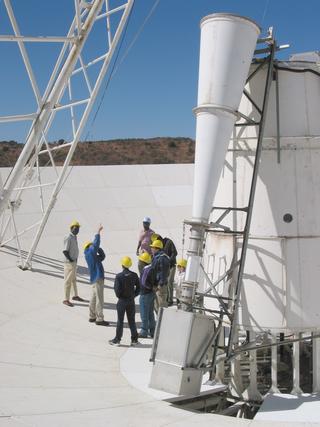
Click on image for large version
The long white "icecream cone" in the foreground is the microwave feed horn
operating in the 18 centimetre wavelength band. Beyond it, with the second
group of students, is HartRAO Director Prof. Justin Jonas, who is pointing
up at the secondary reflector above his head. You cannot see the hyperbolic
subreflector in the picture above, but it is at the top of the picture
below.
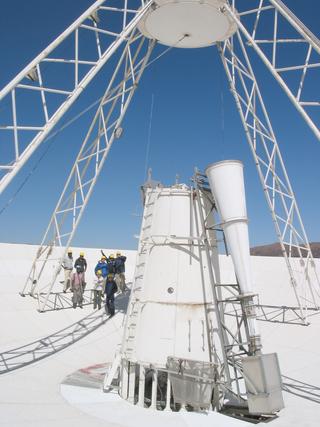
Click on image for large version
The second group of students get together in the telescope.
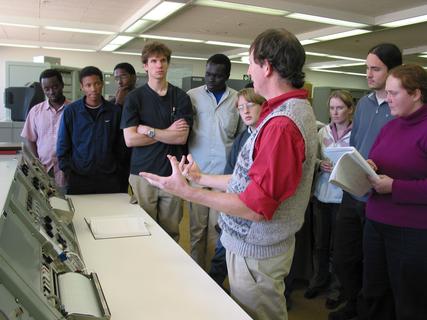
Click on image for large version
The signals from the receivers are carried down to radiometers in the
control room, which are used to measure the intensity of the signals[B. Here
Prof. Jonas explains how this all occurs.
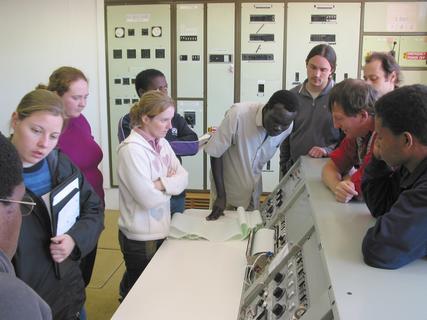
Click on image for large version
The students take a closer look at the radiometers.
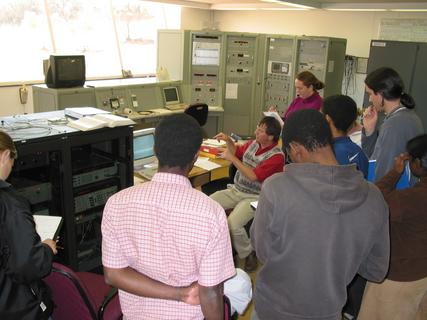
Click on image for large version
The telescope is controlled by PC's using locally developed software
running on Debian Linux. Here the students see how Prof. Jonas carries out
a drift scan - a simple form of continuum flux measurement - on the radio
galaxy Virgo A. Virgo A is a calibrator source - a "standard candle",
against which other radio sources can be compared.
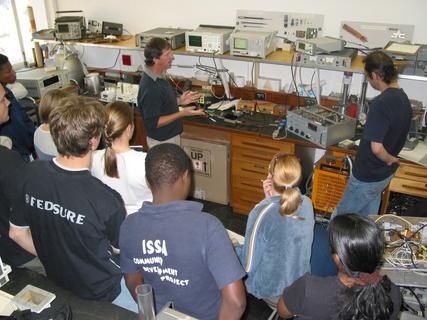
Click on image for large version
The students also get "hands on" experience in the microwave laboratory,
where receivers are built and tested. Here a spare microwave amplifier has
been set up to measure its performance and noise figure. Prof. Jonas
explains how the test setup works.
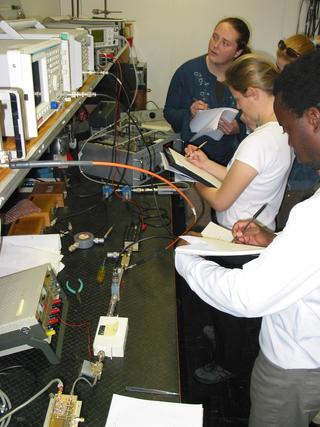
Click on image for large version
The students are left on their own to measure the noise
figure of the amplifier using hot and cold loads. First they make notes on
the test configuration.
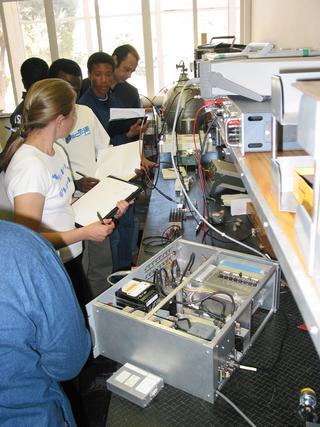
Click on image for large version
What do we do now? The students figure out how to start taking measurements
for the noise figure, using liquid nitrogen as the cold load.
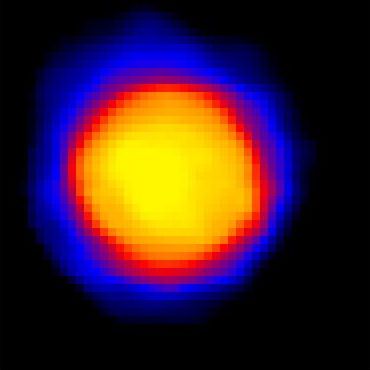
The scans used to contruct this map of the radio emission from the Sun at a
wavelength of 2.5 cm were made during the practical. The Sun is 30 minutes
of arc in diameter, while the beamwidth is 4 minutes of arc. Hence nearly
7.5 beamwidths fit across the Sun, enabling us to detect detail on its
surface - usually enhanced radio emssion associated with sunspots. The
scanning software was written by Jonathan Quick and the image shown here was
created by Sarah Buchner.
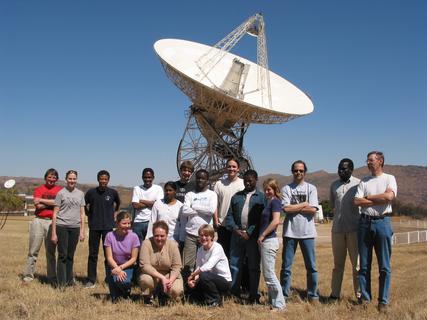
Click on image for large version
The practical is almost over, and the students gather for a group photo in
front of the radio telescope. They are flanked by Director Prof. Justin
Jonas on the left, and Dr. Mike Gaylard on the right, who led the
spectroscopy part of the practical.















